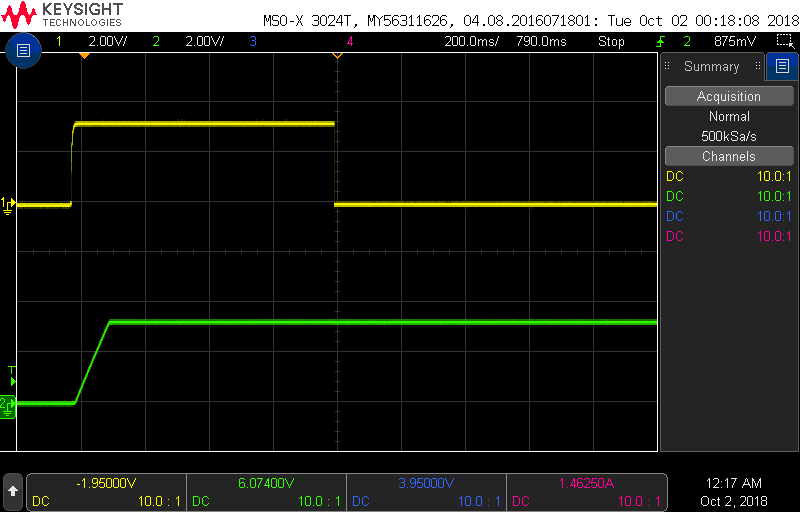Other Parts Discussed in Thread: TXS0108E,
Hi,
Why is the output still high on Vout when the On/Off signal is low?
Vbias: 5V, Vin1 & 2: 3.3V, On1 & 2: low (0.032V), Vout1 & 2: 3.329V
The On/Off signal is driven low (measured through DMM) through a level shifter TXS0108E.
Thanks,
ALbert





